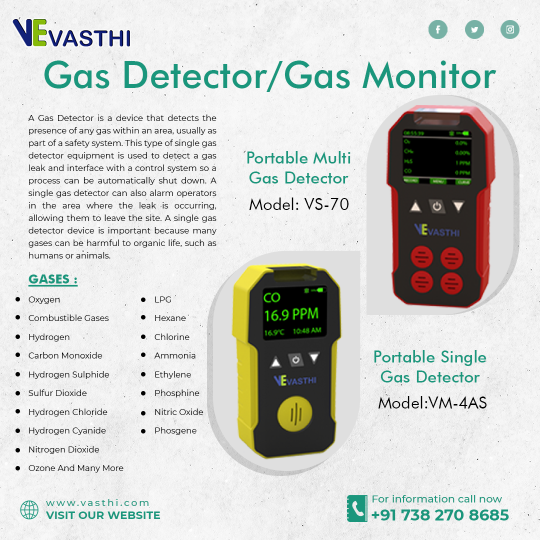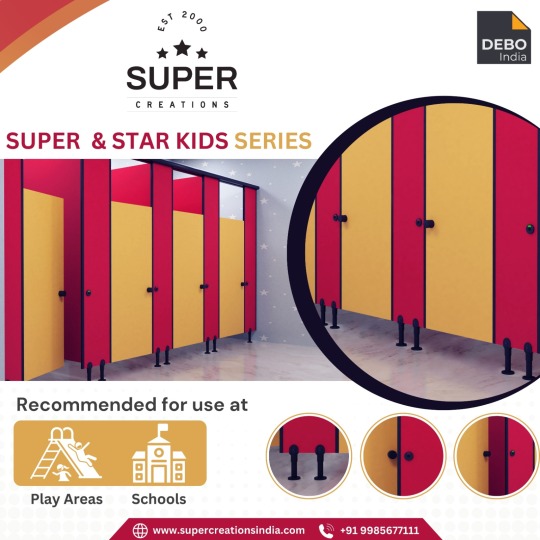#VOC sensor
Explore tagged Tumblr posts
Text

#gas detector#multi gas detector#gas leak detector#co2 detector#gas sensor#gas detector for home#gas monitor#sewer gas detector#combustible gas detector#co2 monitors#gas detector sensor#portable gas detector#mq3 sensor#methane gas detector#h2s detector#LPG gas detector#VOC sensor#ozone meter#gas leak sensor#o2 detector#gas leak detector for kitchen#gas monitoring devices#hydrogen gas sensor#confined space gas detector#gas leak detector for home#Puc monitor#puc device#puc monitor#vehicle emission#emission control
0 notes
Text
youtube
#Portable colorimetric sensor#Fe nanozyme#surface-active sites#artificially ripened fruits#VOC detection#ethylene detection#calcium carbide#food safety#ripeness detection#porous nanozyme#colorimetric changes#fruit quality#sensor array#portable device#on-site testing#chemical analysis#volatile organic compounds#nano-technology#agriculture innovation#food inspection.#Youtube
0 notes
Text
#COVID-19 Impact on VOC Sensor Device Market#COVID-19 Impact#VOC Sensor Device Market#COVID-19#Sensor Device Market
0 notes
Note
the air purifier advice please 🙏
hello!!!!! yes, i will info dump some of the things i come across at work everyday, hopefully it helps!
Quick overview on how air purifiers work: ok so purifiers don't "kill" bacteria/particles which is a lot of the marketing you'll see, air purifiers take in air, filter out particles, and push out clean air back into your home so you don't breathe in the dangerous particles: it's all about airflow (created with a strong motor) and filter type
ONLY trust HEPA and activated carbon filters. every other "technology" out there is not sound, there's no definitive research that proves the effectiveness of any other tech on the market. at best it's ineffective, at worst it's dangerous, i wouldn't trust any of it. some common types of technologies to avoid: ozone generators, ionizers, uv light, when a company has their own "patented tech" that isn't HEPA or carbon
HEPA: this targets airborne particles. dust, pet dander, mold spores, pollen, smoke particles
ACTIVATED CARBON: this targets gasses, volatile organic chemicals (VOCs), odors, smoke odors
Try to find a purifier that's going to cover a lot of your home or at least an entire room - they're portable so I suggest moving them around during the day if you can and bringing them into your bedroom at night.
Finding a purifier that covers your home/room: suggested air changes per hour (ACH) is 4.8 - many companies will list 1 ACH for their square foot coverage to make it seem like it can cover a lot, and it's just not true. Companies SHOULD be sharing their clean air delivery rate (CADR) information that is connected to ENERGY STAR and is tested by the regulatory agency so they cannot fudge their numbers, if they don't share this information it's a red flag
Check CADR and square foot coverage at 4.8 ACH for a product HERE
For example: an air purifier that can clean 1,000 sq ft in 60 minutes with 1 ACH, can clean 500 sq ft in 30 minutes with 2 ACH, and 80 sq ft in 12.5 minutes with 4.8 ACH (it's confusing, i know, but it's important to have a purifier(s) strong enough to clean your indoor space)
Air quality sensors built into purifiers are cheap, i don't trust them to accurately portray your indoor air quality readings, also the apps are...awful: the markets been flooded with smart purifiers it's tough to find one that DOESN'T have an app attached to it. there's nothing wrong with a smart purifier, its up to the user, but its that they can up the price with the add-ons that don't help the main goal of your purifier: clean your indoor air and create healthy indoor air quality in your home
Cross ventilation helps, open those windows!!! air out your home!!! but don't open them on high pollen count or bad air quality days or if you're located near high pollution or close to an active wildfire or smoke. you can check US location air quality HERE ALSO, don't run your air purifiers while you have the windows open. they'll try to clean the outside airflow too, rendering it pretty ineffective.
Look for certifications!!! ENERGY STAR, AHAM, CARB, INTERTEK - these are independent safety and performance certifications that companies have to go through a testing process to receive them, it's not just marketing these are regulations and are standard - if a company doesn't share these results or aren't certified MAJOR red flag
Run those purifiers 24/7!!!!! If they're ENERGY STAR certified (they should be, look for the logo!!) it shouldn't affect your energy bill in a significant way
Just because a purifier costs more doesn't mean it performs better!! just focus on the air cleaning ability: the thing a purifier IS MEANT TO DO: and try to forget about the rest
Unfortunately, a good purifier is always going to be a bit of an investment. the mini purifiers out there and the wearable ones just do not do anything, i wish they did, but filters need surface area to be effective, they're too small, and the motor isn't efficient.
Good news is there should be some very good sales coming up in november!!!! stay safe!!
5 notes
·
View notes
Text

Green Thumb Trinkey springs into existence 🌱💧🌞
With recent work to improve our soil moisture sensing, it could be a nice time to design an 'all-in-one' board for plant and garden hacking. This board has a USB C, so you can plug it right into your computer and read the capacitance of the soil, as well as the ambient light level and temperature + humidity of the onboard AHT20. A QT sensor and 'standard Stemma QT' mounting holes mean you can plug in a VOC, CO2, UV, or PM.2 sensor. The SAMD21E18 can run Arduino or CircuitPython, but we'll also ship it with an example that just spits out CSV data over the serial port for instant interfacing. Coming soon.
#adafruit#trinkey#arduino#circuitpython#SAMD21E18#gardentech#plantcare#soilmoisture#smartgardening#usbctools#diygardening#sensorboard#plantmonitor#techforplants#hardwarehacking
6 notes
·
View notes
Text
Eco-Friendly Restroom Cubicles: Sustainable Solutions for Modern Washrooms


Sustainability is becoming increasingly important in building and design, and restroom cubicles are no exception. This article looks at how environmentally friendly materials, energy-efficient designs, and sustainable practices are altering modern restrooms. We stress the use of renewable resources such as bamboo, recycled plastics, and FSC-certified wood, which not only have a low environmental effect but also provide longevity and style. Learn how water-saving technologies like low-flow flush systems and sensor-activated faucets can help reduce water consumption and contribute to greener restroom operations. The article also discusses the necessity of recyclable and reusable materials in cubicle production, which ensures that these critical components may be repurposed rather than ending up in landfills. Advanced finishes, such as low-VOC coatings, are considered for their to maintain air quality while providing robust protection against wear and tear. for more details visit :- https://supercreationsindia.com/
#toilet partitions#toilet cubicles#restroom cubicles#restroom partitions#washroom partitions#washroom cubicles#super creations#bathroom partitions#architecture
2 notes
·
View notes
Text
Eco-Friendly Restroom Cubicles: Sustainable Solutions for Modern Washrooms


Sustainability is becoming increasingly important in building and design, and restroom cubicles are no exception. This article looks at how environmentally friendly materials, energy-efficient designs, and sustainable practices are altering modern restrooms. We stress the use of renewable resources such as bamboo, recycled plastics, and FSC-certified wood, which not only have a low environmental effect but also provide longevity and style. Learn how water-saving technologies like low-flow flush systems and sensor-activated faucets can help reduce water consumption and contribute to greener restroom operations. The article also discusses the necessity of recyclable and reusable materials in cubicle production, which ensures that these critical components may be repurposed rather than ending up in landfills. Advanced finishes, such as low-VOC coatings, are considered for their to maintain air quality while providing robust protection against wear and tear. for more details visit :- https://supercreationsindia.com/
#toilet cubicles#architecture#toilet partitions#design#restroom partitions#exteriors#interiors#super creations#construction#washroom partitions#washroom cubicleswash
2 notes
·
View notes
Text
Portable Multi Gas Detector
Labmate Portable Multi Gas Detector ensures usability with single-button operation, detecting 10 gases (O2, CH2, CO2, VOC, CO, H2, SO2, CL2, NO2, NH2) with high-precision sensors. It offers a quick response time of ≤ 10sec with flow range of 0-800 mL/min, a 3.5-inch display, and a modular structure.

2 notes
·
View notes
Text
Into, Across and Beyond! Locations: Universe Chart
In this post, I'll go through the codenames for all of the present universes in Sonic: Into, Across and Beyond!, and what character(s) they are assigned to:
Blur Gang's universes
MP-2021 (OMT universe) CR-2017 (Crossover Realm / EXE CU) NS(Nexus Sensor)-2021 (OMT!Mina's universe) JA-1991 (Mini Sonic's universe) NM-1973 (Mr. Needlemouse's universe) EX-2022 (Xenophanes' universe) DS-2022 / FNF-DS-3110 (D-Sides universe) BK-2009 (Black Knight universe) ND-2022 (ChaosIIUniverse) PR-2023 (Shatterverse) - PR-EGG-2023 (New Yolk City) - PR-GRO-2023 (Boscage Maze) - PR-SEA-2023 (No Place) - PR-GRIM-0000 (The Grim) - PR-FICE-2024 (Deepfreeze Domain) EV-2019 (Errorverse) MV-2023 (Mobiverse) MFF-2022 (Mobius' Freedom Fighters Universe) GI-2023 (Hog's Universe) MY-2023 (Wacky's universe)
Visited Into the Sonic-verse universes
BOOM-2014 (Boom universe) AO-1992 (AoSTH universe) X-2000 (Sonic X universe) MULTI-2023 (Superstars universe)
Quill Society's universes
SS-2001 (Lost Memory universe) STC-1993 (Sonic the Comic universe) AR-1992 (Archie Sonic multiverse) CD-1993 (CD Alt End universe) UG-1999 (Underground universe) LEGO-2016 (LEGO Sonic universe) SUNK-2014 (Sunky universe) FP-2015 (Freedom Planet universe) NM-1963 (Needlem0use universe) MOV-2019 (Movie universe) SA-2022 (Milly's universe) BL-2017 (Blitz universe) RAW-1994 (RAW's universe) DΩ-2018 (Discovery Omega universe) OVA-1996 (Sonic OVA universe) PDH-2011 (Pana's universe) ELE-2023 (Sonic x Elemental universe) VOC-2009 (Stella's universe) PIR-1994 (Somari universe)
Other Sonic universes
IDW-2017 (IDW universe) SAT-1993 (SatAM universe) RE-2014 (Lost Drive universe) XE-2018 (Extraterrestrial Encounter universe) HoM-2023 (Hues of Metal universe) SRB-1998 (The universe of Sonic Robo Blast 2 and its MANY mods) ZONE-0000 (No Zone) - ZONE-SM-1992 (Luna Zone) - ZONE-LAW-2000 (Ligitopolis) - ZONE-ANTI-1994 (Moebius) - ZONE-MER-1998 (Kingdom of Mercia) - ZONE-YL-2058 (25 Years Later universe) NEX-2023 (Sonic Legends universe / Nexus Dimension) - NEX-PM-2008 (Project Mettrix sub-universe) - NEX-UT-2006 (Sonic Utopia 2006 sub-universe) - NEX-ZERO-2012 (Sonic Zero Remastered sub-universe) - (more to be added) PRIME-1991 (the ORIGINAL Sonic universe) EDU-1996 (Sonic's Schoolhouse) EXE-2013 (original Sonic.exe universe) GMT-811 (Green Mountain)
Linked universes (via ties to Sonic)
FNF-NEW-2023 / Earth-111723 (Rewritten FNF universe) EJ-2017 (Spark the Electric Jester universe) RR-2024 (Rollin' Rascal universe) BB-2024 (Penny's Big Breakaway universe)
Max Chaos universes
MAX-2024-ADV (Max Chaos Adventure prime universe) MAX-2024-HRZ (Max Chaos Horizon prime universe) MAX-2024-PRα (PrimeAlpha Max Chaos universe) MAX-2024-PRβ (PrimeBeta/Errorverse Max Chaos) MAX-2025-HRZIF (Horizon IAB! IF... universe)
Disconnected universes
alans_pc (Animator vs. Animation universe) UT-2015 / DR-2018 (Undertale and Deltarune universes) FNF-2020 (Friday Night Funkin' universe) - FNF-BS-169 / Earth-169 (B-Sides universe) - FNF-NEGA-427 / Earth-427 (Minus universe) - FNF-NEO-21821 / Earth-21821 (Neo universe) - FNF-SOFT-10143 / Earth-10143 (Soft universe) - FNF-POINT-22512 / Earth-22512 (Arrow Funk universe) - FNF-ALT-409 / Earth-409 (Funkinverse base world) - FNF-WHOT-88 / Earth-88 (VS OURPLE GUY universe) - FNF-HOLO-16063 / Earth-16063 (HoloFunk universe) - FNF-TOON-2819 / Earth-2819 (Wednesday's Infidelity universe) - FNF-MOBI-623 / Earth-623 (Mobian BF's universe) - FNF-TG-1249 / Earth-1249 (Blueballs Incident universe) - FNF-DJX-221711 / Earth-221711 (DJX universe) - FNF-HF50-13166 / Earth-13166 (HoloFunk Pre-6.0 universe) - FNF-LOGIC-804 / Earth-804 (FNF Logic universe) - FNF-LYRIC-1215 / Earth-1215 (FNF WITH LYRICS universe) - FNF-CLAY-5619 / Earth-5619 (Clay BF's universe) - FNF-MIX2-72599 / Earth-72599 (Alt MIX universe) - FNF-MEGA-12488 / Earth-12488 (B-Bot's universe) - FNF-REW-15221 / Earth-15221 (Return Funkin' universe) - FNF-WII-1119 / Earth-1119 (Mii BF's universe / Wuhu Island) - FNF-CHILD-8814 / Earth-8814 (Childhood Memories universe) - FNF-BLU-923 / Earth-923 (BluBuni's universe) - FNF-SALT-21 / Earth-21 (??????????????) MSYN-2018 (DDLC universe) GC-2019 (Glitch Chaos universe) URB-2023 / Earth-12124 (the city universe where New Identity, New Life takes place)
JC-231 (the old Sonic.exe story universe that's frowned upon by EVERY Quill Society member. Yep, even LM!Sonic.)
SEGAVerse universes
TNL-2015 (Sonic 1: The Next Level universe / Gust Planet) AK-1986 (Alex Kidd universe) RIS-1995 (Ristar universe) NIGH-1996 (NiGHTS universe) SDA-2000 (Samba De Amigo universe) SC5-2002 (Space Channel 5 universe) COL-1990 (Columns universe) FAN-1986 (Fantasy Zone universe) AXE-1989 (Golden Axe universe) MONK-2001 (Super Monkey Ball universe) PUYO-1992 (Puyo Puyo universe) CHU-2001 (ChuChu Rocket! universe) JET-2000 (Jet Set Radio universe) EGG-2003 (Billy Hatcher universe) ECCO-1992 (Ecco universe) SHI-1992 (Shining Force universe) GUN-1993 (Gunstar Heroes universe) ROCK-1992 (Sparkster universe) RAGE-1991 (Streets of Rage universe) TOE-1991 (ToeJam & Earl universe) ARC-2000 (Skies of Arcadia universe) DRA-1995 (Panzer Dragoon universe) AGES-2012 (City of AGES) UNK-0013 (Dr. EggOmega's universe)
CapcomVerse universes
MEGA-1987 (Mega Man universe) VIEW-2003 (Viewtiful Joe universe) BRE-1993 (Breath of Fire universe) GNG-1985 (Ghosts 'n Goblins universe) OKA-2005 (Ōkami universe) SF-1987 (Street Fighter universe) HUNT-2004 (Monster Hunter universe)
#sonic exe#sonic the hedgehog#spider verse#sth#sonic#sth au#sonic fandom#sonic au#spider man#mega man#friday night funkin#freedom planet#undertale#sunky#sunky.mpeg#somari#d sides#ristar
5 notes
·
View notes
Text

#gas detector#multi gas detector#gas leak detector#co2 detector#gas sensor#gas detector for home#gas monitor#sewer gas detector#combustible gas detector#co2 monitors#gas detector sensor#portable gas detector#mq3 sensor#methane gas detector#h2s detector#LPG gas detector#VOC sensor#ozone meter#gas leak sensor#o2 detector#gas leak detector for kitchen#gas monitoring devices#hydrogen gas sensor#confined space gas detector#gas leak detector for home#Puc monitor#puc device#puc monitor#vehicle emission#emission control
0 notes
Text
Green Building Practices: Incorporating Sustainability in Home Construction

As the world becomes more conscious of environmental issues, incorporating green building practices in home construction has gained significant importance. Sustainable construction not only reduces the negative impact on the environment but also promotes healthier living spaces. In this blog post, we will explore the various ways homeowners and builders can embrace green building practices to create sustainable homes.
Energy Efficiency: Energy-efficient homes minimize energy consumption and reduce carbon footprint. Incorporate energy-efficient appliances, LED lighting, and properly insulated windows and walls. Consider renewable energy sources like solar panels to power your home and reduce reliance on traditional energy grids.
Water Conservation: Implement water-saving techniques by installing low-flow fixtures, dual-flush toilets, and rainwater harvesting systems. Efficient irrigation systems and landscaping choices can also reduce water consumption.
Sustainable Materials: Choose eco-friendly building materials, such as recycled or reclaimed wood, bamboo flooring, and low-VOC (volatile organic compound) paints. Opt for products with recognized certifications like Forest Stewardship Council (FSC) for wood or Cradle to Cradle for sustainable manufacturing practices.
Waste Management: Develop a comprehensive waste management plan to reduce construction waste. Recycle and reuse materials whenever possible, and dispose of waste responsibly. Collaborate with local recycling facilities and donate usable materials to minimize environmental impact.
Passive Design: Implement passive design strategies to maximize natural lighting, ventilation, and thermal comfort. Orienting the house to take advantage of sunlight, incorporating efficient insulation, and using strategic landscaping can significantly reduce energy needs.
Water Efficiency: Install high-efficiency plumbing fixtures, such as low-flow showerheads and faucets, and consider graywater systems for recycling water from sinks and showers for non-potable uses like irrigation.
Indoor Air Quality: Promote a healthy living environment by using low-VOC paints, sealants, and adhesives. Proper ventilation systems with heat recovery can improve air quality and reduce the presence of pollutants.
Green Roofing and Insulation: Consider green roofs, which provide insulation, reduce stormwater runoff, and improve air quality. Optimize insulation to minimize heat loss or gain, reducing the need for excessive heating or cooling.
Smart Home Technology: Integrate smart home systems to optimize energy consumption, such as programmable thermostats, motion sensor lighting, and smart energy monitoring devices.
Incorporating sustainable practices in home construction benefits both homeowners and the environment. By adopting green building practices, we can reduce our carbon footprint, conserve resources, and create healthier and more energy-efficient living spaces. Whether you're building a new home or renovating an existing one, embracing sustainability in construction is a positive step toward a greener future. Let's work together to build homes that are not only beautiful but also contribute to a sustainable and eco-friendly world.
At Sparks Construction, we take great pride in being one of the leading custom home builders in Lake City, FL. With a deep understanding of the local market, we offer personalized and exceptional services as a trusted home builder in Lake City. Whether it's a new construction or a renovation project, we are committed to bringing your vision to life. As one of the premier home builders in Lake City, we prioritize quality craftsmanship, attention to detail, and exceeding your expectations. Choose Sparks Construction for your custom home building needs in Lake City and experience the difference firsthand.
#new home construction#home builders gainesville fl#new home construction gainesville fl#home construction#new home#home builders
5 notes
·
View notes
Text
Air Quality Meters: The Key to a Healthier Environment – AAM Trading
Air Quality Meters: The Key to a Healthier Environment – AAM Trading
Air quality monitoring is more crucial than ever in the modern world, where pollution levels are rising and environmental concerns are intensifying. Numerous health problems, including as allergies, cardiovascular disorders, and respiratory ailments, can be brought on by poor air quality. Air quality meters are useful in this situation because they give precise information that enables people, organizations, and governments to take the appropriate action. With a large selection of premium air quality meters, AAM Trading makes sure you have everything you need to keep your surroundings safe and healthy.
Understanding Air Quality Meters
A tool used to measure air pollutants and dangerous particles is called an air quality meter. Particulate matter (PM2.5 and PM10), carbon dioxide (CO2), carbon monoxide (CO), volatile organic compounds (VOCs), temperature, and humidity are among the variables that these meters assist in monitoring. Users can improve the quality of the air in their homes, workplaces, industries, and outdoor spaces by using real-time data.
Why You Need an Air Quality Meter
1.Protection of Health
Lung infections, bronchitis, and asthma are among the respiratory conditions that can be brought on by poor air quality. You may identify contaminants and take preventative action with an air quality meter.
2.Safety at Work
The health and productivity of employees can be greatly impacted by air quality in commercial and industrial settings. Air quality meters aid in the monitoring of dangerous gases and the maintenance of a secure workplace.
3.Awareness of the Environment
Air quality meters are used by governments and environmental organizations to monitor pollution levels, enforce laws, and carry out pollution control strategies.
4.Efficiency of Energy
Air quality monitoring can also aid in HVAC and ventilation system optimization, which lowers costs and uses less energy.
Types of Air Quality Meters Offered by AAM Trading
AAM Trading provides a variety of Air Quality Meters suitable for different applications:
1. Portable Air Quality Meters
Small and simple to operate
Perfect for both personal and commercial use
measures a variety of air contaminants.
2. Indoor Air Quality Monitors
Ideal for offices, households, and educational institutions
detects humidity, VOCs, and CO2.
helps keep the inside atmosphere cozy.
3. Industrial-Grade Air Quality Meters
Made for huge facilities like factories and warehouses
keeps an eye on dangerous gasses and tiny particles
complies with safety standards
4. Smart Air Quality Sensors
Linked to cloud systems and mobile applications
provide notifications and data in real time.
Connectivity to smart home systems
How to Choose the Right Air Quality Meter?
Your unique demands will determine which air quality meter is best for you:
For use at home, pick an indoor or portable air quality monitor with capabilities including humidity, VOC, and CO2 monitoring.
For offices and businesses, use smart air quality sensors that may be connected to building management systems and offer real-time alerts.
For industrial applications, use air quality meters of industrial grade that concentrate on detecting hazardous gases and adhering to safety regulations.
Why Choose AAM Trading for Air Quality Meters?
With the following benefits, AAM Trading is dedicated to offering the best air quality monitoring solutions:
✔ Premium Products: We provide precise and dependable air quality meters from top manufacturers.
✔ Professional Consultation: Our team of professionals assists you in selecting the best gadget for your requirements.
Competitive pricing offers cost-effective solutions without sacrificing quality.
✔ After-Sales Support: Committed customer service to help with maintenance, installation, and use.
Conclusion
Purchasing an air quality meter is a wise move given the rising health hazards and air pollution. These gadgets offer vital information to enhance air quality and guarantee safety, whether they are used for domestic, business, or industrial purposes. To fulfill a variety of purposes, AAM Trading provides a wide range of air quality meters, enabling you to breathe cleaner, healthier air every day.
Take the first step toward a better environment by getting in touch with AAM Trading right now for more information!
0 notes
Text
The automotive cabin air quality sensors market is projected to grow from USD 1065 million in 2024 to USD 2732.56 million by 2032, reflecting a compound annual growth rate (CAGR) of 12.5% during the forecast period. The automotive cabin air quality sensors market is witnessing rapid growth, driven by increasing consumer awareness of health and air quality issues, as well as the rising adoption of advanced automotive technologies. These sensors, which monitor and regulate the quality of air inside vehicle cabins, have become essential components in modern vehicles. With their ability to detect harmful pollutants, ensure passenger comfort, and enhance overall vehicle performance, these sensors are shaping the future of automotive innovation.
Browse the full report at https://www.credenceresearch.com/report/automotive-cabin-air-quality-sensors-market
Market Overview
Automotive cabin air quality sensors are designed to detect various pollutants such as carbon dioxide (CO2), carbon monoxide (CO), nitrogen oxides (NOx), particulate matter (PM), and volatile organic compounds (VOCs). By providing real-time data on air quality, these sensors enable advanced air purification systems to filter out harmful pollutants and maintain a clean cabin environment.
The growing concerns about environmental pollution and its impact on health have significantly boosted the demand for these sensors. Moreover, stringent government regulations on vehicle emissions and air quality standards are compelling automakers to integrate advanced air quality monitoring systems into their vehicles.
Key Market Drivers
Increasing Awareness of Air Pollution With urbanization and industrialization on the rise, air pollution levels have reached alarming heights. Consumers are increasingly prioritizing clean air and comfort while traveling, driving demand for vehicles equipped with cabin air quality sensors.
Stringent Regulatory Standards Governments worldwide are implementing stringent regulations to control vehicular emissions and improve air quality. For instance, the European Union's Euro 6 and China's CN-6 standards emphasize reducing pollutants inside and outside vehicles, fostering the adoption of air quality sensors.
Rise in Electric and Autonomous Vehicles The growing adoption of electric and autonomous vehicles has further fueled the market. These advanced vehicles often feature cutting-edge technologies, including sophisticated cabin air quality monitoring systems, to provide a premium experience.
Health and Wellness Trends Post-pandemic, there is heightened focus on health and hygiene. Automakers are incorporating features like air purifiers, ionizers, and advanced filtration systems alongside air quality sensors to meet consumer demands for wellness-oriented features.
Challenges in the Market
Despite its promising growth, the market faces certain challenges. High initial costs of advanced air quality systems may deter adoption in budget-friendly vehicle segments. Additionally, technical limitations in detecting specific pollutants and maintaining sensor accuracy over time remain key concerns.
Future Outlook
The automotive cabin air quality sensors market is poised for significant growth, with increasing investments in R&D and advancements in sensor technology. The integration of artificial intelligence (AI) and the Internet of Things (IoT) is expected to revolutionize air quality monitoring systems, enabling predictive maintenance and smarter filtration systems.
Key Player Analysis:
Paragon GmbH & Co. KGaA
Sensata Technologies
Sensirion AG
ams AG
SGX Sensortech
Standard Motor Products
Valeo SA
Figaro Engineering Inc.
UST Umweltsensortechnik GmbH
Prodrive Technologies
Segmentations:
By Type
Pressure Sensors
Temperature Sensors
By Technology Type
Active Sensors
Passive sensors
By Sales Channel Type
OEM
Aftermarket
By Vehicle Type
Passenger Cars
Commercial Vehicles
By Geography
North America
U.S.
Canada
Mexico
Europe
Germany
France
U.K.
Italy
Spain
Rest of Europe
Asia Pacific
China
Japan
India
South Korea
South-east Asia
Rest of Asia Pacific
Latin America
Brazil
Argentina
Rest of Latin America
Middle East & Africa
GCC Countries
South Africa
Rest of the Middle East and Africa
Browse the full report at https://www.credenceresearch.com/report/automotive-cabin-air-quality-sensors-market
Contact:
Credence Research
Please contact us at +91 6232 49 3207
Email: [email protected]
0 notes
Text
Sustainable Facility Maintenance: How to Implement Eco-Friendly Practices in Your Facilities

Hey there! Sustainability is the buzzword on everyone’s lips these days, and for good reason. Companies are stepping up to reduce their environmental impact, embracing greener practices across the board. But here’s the thing—one area often overlooked is facility maintenance. It might not sound glamorous, but trust us, sustainable facility maintenance is a total game-changer. It can slash environmental impact, save money, and boost efficiency. Ready to dive in? Let’s explore how you can green up your maintenance game and why it’s an absolute must for your business.
What is Sustainable Facility Maintenance?
Before we dig into the details, let’s break down what sustainable facility maintenance actually means. It’s all about managing buildings in ways that are kind to the planet. This involves implementing practices aimed at:
Reducing Energy Consumption: From HVAC systems to lighting, optimizing energy use is key.
Minimizing Waste: Think recycling programs and responsible disposal methods.
Conserving Water: Using water-efficient fixtures and mindful practices can make a huge impact.
Promoting Health and Well-being: Improve air quality and comfort with sustainable materials and green cleaning methods.
Extending Asset Lifespan: Regular maintenance keeps equipment and structures in top shape, reducing the need for replacements.
Eco-Friendly Practices for Sustainable Facility Maintenance
Now, let’s dive into some practical, eco-friendly strategies to transform your facility maintenance.
Energy Efficiency
LED Lighting: Ditch those old bulbs and switch to energy-saving LEDs. It’s a simple change with a big payoff.
Smart HVAC Systems: Programmable thermostats and sensors can optimize temperature control, saving energy without sacrificing comfort.
Regular Maintenance: Keep HVAC systems running smoothly with routine tune-ups. Clean filters and inspect ducts regularly.
Energy Audits: Conduct energy audits to identify wasteful practices. Implement the findings to see immediate savings.
Waste Reduction and Recycling
Source Separation: Set up systems to separate recyclables, compostables, and general waste. Easy sorting leads to better results.
Waste Audits: Periodically assess your waste generation and find ways to cut back. Small adjustments can lead to significant reductions.
Sustainable Vendors: Partner with suppliers who share your commitment to sustainability. It’s a win-win for everyone.
Water Conservation
Low-Flow Fixtures: Install water-efficient faucets, toilets, and urinals. They reduce water use without compromising performance.
Leak Detection: Regularly check for leaks and fix them promptly. Every drop saved counts.
Efficient Landscaping: Use drought-resistant plants and smart irrigation systems for a lush, guilt-free garden.
Green Cleaning
Eco-Friendly Cleaning Products: Opt for environmentally safe cleaning products that are gentle on people and the planet.
Microfiber Cleaning Cloths: These reusable cloths trap dust and dirt effectively, cutting down on the need for harsh chemicals.
Day Cleaning: Schedule cleaning during daylight hours to save energy and improve efficiency.
Indoor Air Quality
Air Filtration: Use high-efficiency air filters and replace them regularly. Clean air is vital for a healthy workspace.
Proper Ventilation: Ensure good airflow to reduce indoor pollutants. Better air equals better performance.
Green Materials: Choose low-VOC paints, adhesives, and finishes to improve air quality. Healthy materials make for healthier spaces.
Asset Management
Preventive Maintenance: A solid maintenance plan extends the life of your equipment and structures, saving money in the long run.
Condition Assessments: Regularly evaluate the condition of your facilities to address potential issues before they escalate.
Lifecycle Cost Analysis: Consider long-term costs and benefits when investing in facility upgrades. Smart choices today lead to big savings tomorrow.
Reporting and Training
Metrics and Reporting: Develop key performance indicators (KPIs) to track and measure your sustainability efforts. Clear data drives improvement.
Certifications: Aim for certifications like LEED or BREEAM to showcase your commitment to sustainability.
Employee Training: Educate your team on sustainable practices. Empowered employees are key to achieving your green goals.
Engagement: Build a culture of environmental responsibility. Encourage everyone to pitch in and make a difference.
The Benefits of Sustainable Facility Maintenance
Why go green with your facility maintenance? The benefits speak for themselves:
Cost Savings: Lower energy and water bills, reduced waste disposal costs, and fewer maintenance expenses.
Environmental Stewardship: Contribute to a healthier planet by reducing resource consumption and greenhouse gas emissions.
Health and Well-being: Better indoor air quality leads to healthier, happier occupants.
Compliance and Reputation: Stay on the right side of environmental regulations while enhancing your organization’s image.
Long-Term Sustainability: Extend the lifespan of facilities and equipment, reducing costly replacements.
Competitive Advantage: Attract environmentally conscious clients, tenants, and employees who value sustainability.
Conclusion
Sustainable facility maintenance isn’t just a trend—it’s a smart, responsible way to manage your buildings. By adopting green practices, you can reduce your environmental footprint, save money, and create healthier, more efficient spaces. At Servi-Tek Facility Solutions, we’re passionate about promoting these practices and helping organizations like yours make a difference.
So, are you ready to make sustainability a cornerstone of your facility management? Let’s team up and build a greener future together. The planet will thank you—and so will your bottom line. Are you with us?

#commercial cleaning#facilitymanagement#janitorial services#propertymanagement#facilitymaintenance#servitek#ecofriendly
0 notes